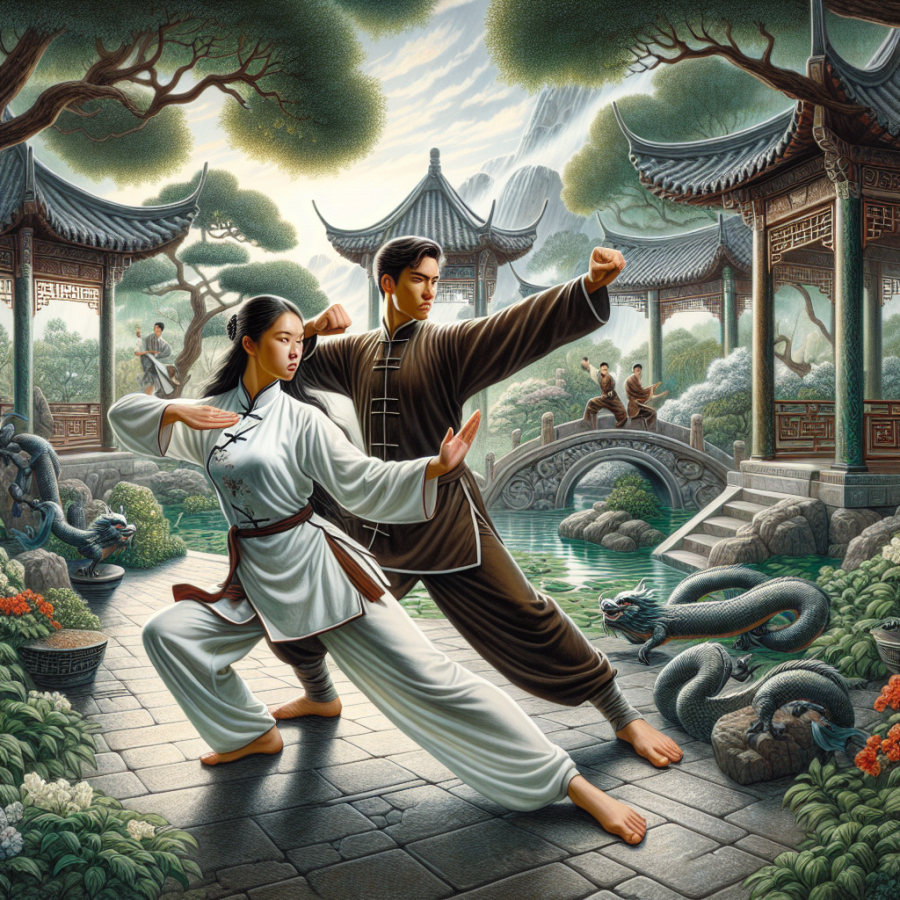Tracing the Lineage of Kung Fu: Unveiling the Mysteries of a Martial Tradition
The martial arts world is replete with diverse styles, each with its own unique history and techniques. Yet, among these, Kung Fu has always stood out as a captivating and deeply cultural form. Tracing the lineage of Kung Fu is much like unfolding a rich tapestry of stories that interweave philosophy, combat techniques, and the pursuit of spiritual enlightenment.
Kung Fu, also known as Gong Fu or Wushu, refers to the collective assortment of martial arts originating from China. The roots of these arts can be traced back to the early dynasties, where the need for self-defense, military training, and discipline were essential. Over the centuries, Kung Fu evolved, absorbing influences from various sources, including Chinese medicine, the philosophies of Confucianism, Buddhism, and Daoism, and the movements of animals observed in nature.
The Shaolin Temple is often considered the cradle of Chinese martial arts. It is said that Bodhidharma, an Indian monk, traveled to China around the 5th or 6th century AD and taught the monks at the Shaolin Temple exercises to improve their health and meditation practices. These exercises laid the groundwork for the development of Shaolin Kung Fu, which epitomizes the combination of Zen Buddhism’s meditative aspects with rigorous physical discipline.
Each Kung Fu style presents its unique lineage. For example, the Wing Chun system, popularized by legends such as Ip Man and Bruce Lee, is attributed to the teachings of a woman and is known for its efficiency and close combat techniques. On the other hand, the flowing movements of Tai Chi, another Kung Fu style, emphasize internal power and were initially designed both as a martial art and a form of moving meditation.
Masters of Kung Fu commonly pass down their knowledge through a traditional apprenticeship system. The student not only learns the physical aspects of Kung Fu but is also imbued with the values and philosophies underlying the practice. These include principles such as discipline, respect, and humility. The deeper one delves into the study of Kung Fu, the more one realizes that it is more than a method of fighting; it is a way of cultivating character and enhancing one's way of life.
Exploring the techniques and training methods of Kung Fu can be a fascinating journey.
Read also:
Uniting Through Hoops: The Bond of Basketball Families
Embarking on the Path to Kung Fu Mastery: Techniques, Training, and Tradition
Embarking on the path to mastering Kung Fu is an endeavor that intertwines the discipline of the body with the cultivation of the mind and spirit. The journey to becoming adept in this ancient Chinese martial art involves deeply immersing oneself in both the techniques and the traditional philosophies that underpin the practice.
One of the foundational elements of Kung Fu training involves perfecting a wide array of techniques. These often include stances, punches, kicks, blocks, and evasive maneuvers. Students must diligently practice these movements until they can be executed with fluid precision. Mastery of these techniques requires a combination of balance, strength, flexibility, and speed. Each movement serves a purpose, whether it be for offense, defense, or conditioning.
The study of forms, or 'taolu', is another critical component in the cultivation of Kung Fu skills. Forms are choreographed sets of movements that simulate combat scenarios against imaginary opponents. The practice of forms allows practitioners to work on their techniques, flow, and expression of power. Through repetition, forms become ingrained in muscle memory, enabling practitioners to perform complex sequences of movements instinctively.
Sparring, or 'sanda', provides a platform for students to apply Kung Fu techniques in a more dynamic and interactive context. It helps in understanding distance, timing, and strategy. Controlled sparring sessions enable practitioners to test their skills against a resisting partner safely, adapting their techniques in real-time while also working on reflexes and endurance.
Beyond the physical techniques, training also incorporates various breathing exercises and internal practices, such as Qigong and Tai Chi, which are integral to Kung Fu. These exercises enhance energy flow, or 'qi', throughout the body and can improve vitality, health, and martial arts capabilities. Understanding and utilizing these internal aspects raise a practitioner's level from mere technique to true expression of the art.
The tradition of Kung Fu extends well beyond the physical realm; it is steeped in philosophy, ethics, and a way of life. The teachings of Confucianism, Taoism, and Buddhism are often integrated into Kung Fu practice, providing a moral framework and guiding principles for personal behavior both within and outside the training hall. Respect, humility, patience, and perseverance are virtues that are deeply emphasized, reflecting the profound cultural roots of the martial art.




